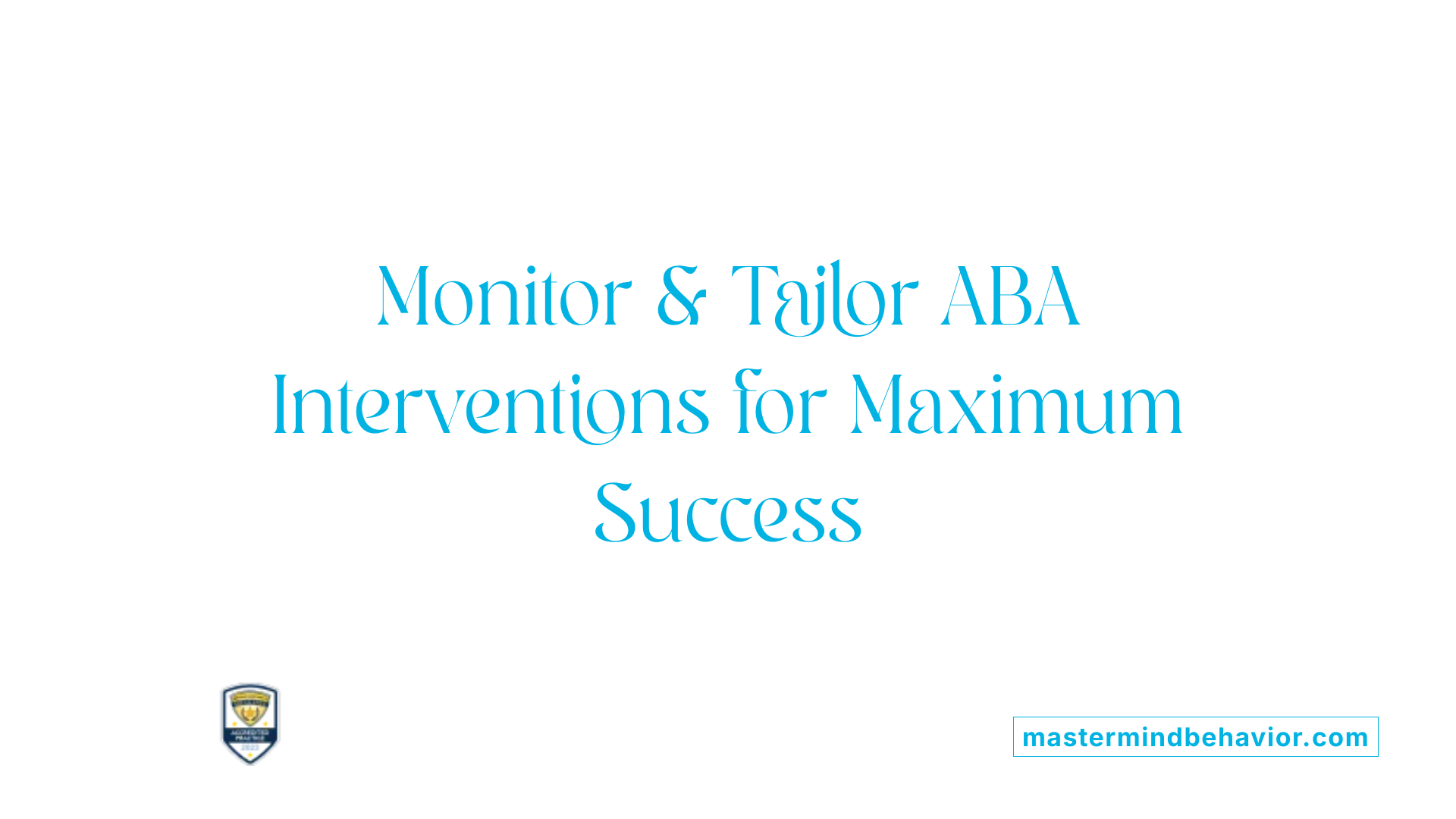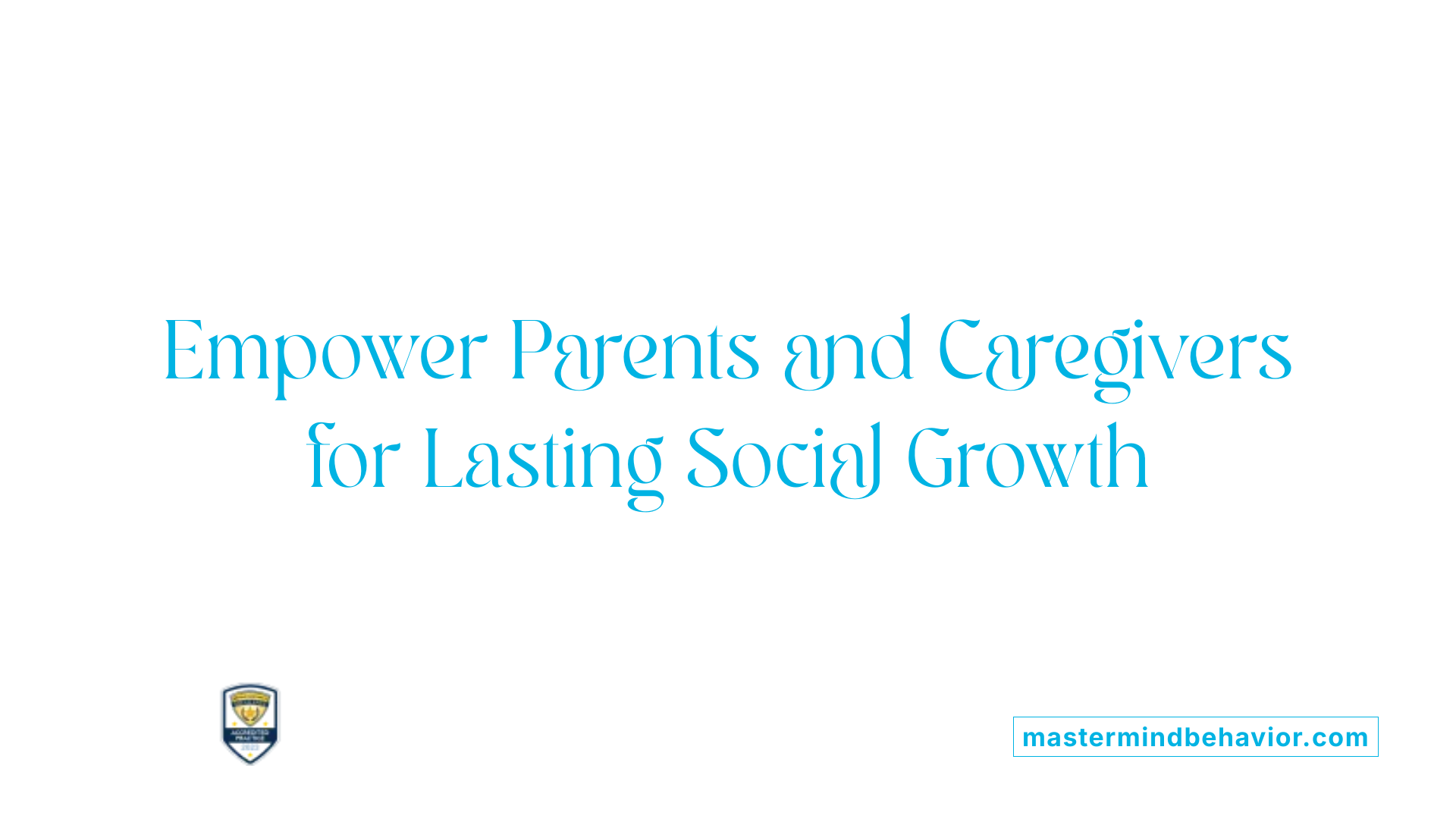Strategies For Building Peer Relationships Through ABA Social Skills Training

Understanding ABA and Its Role in Social Development
Applied Behavior Analysis (ABA) therapy is a scientifically grounded approach focused on improving communication, social interaction, and adaptive behaviors in individuals with autism. Central to ABA is the systematic teaching of skills through structured interventions tailored by certified professionals. This article explores effective ABA-based strategies that foster peer relationships and enhance social competence in children with autism, highlighting techniques, progress tracking, and caregiver involvement crucial to successful outcomes.
Foundations of ABA Therapy for Autism Spectrum Disorder
What is Applied Behavior Analysis (ABA) therapy and how does it help individuals with autism?
Applied Behavior Analysis (ABA) is a science-based therapeutic approach designed to improve learning and adaptive behaviors, particularly in individuals with autism spectrum disorder (ASD). It focuses on encouraging positive behaviors and reducing behaviors that hinder development. ABA achieves this through structured interventions using positive reinforcement, breaking down skills into manageable steps, and teaching behaviors in natural contexts.
What are the core principles of ABA therapy?
ABA operates on the principle that behaviors can be taught and modified through systematic, data-driven methods. Key components include:
- Positive reinforcement: Rewarding desirable behaviors to increase their occurrence.
- Task analysis: Breaking complex skills into smaller, teachable components.
- Data collection: Monitoring progress continuously to tailor and improve interventions.
- Individualized treatment plans: Each plan is customized based on assessment findings and child-specific needs.
How does ABA benefit children with autism?
ABA therapy has proven benefits including:
- Enhanced communication skills such as language use and non-verbal cues.
- Improved social interaction and understanding of social cues.
- Development of essential social skills like sharing, turn-taking, and emotion regulation.
- Increased independence and confidence in social settings.
- Better academic performance and overall quality of life.
How does ABA improve social and communication skills?
ABA uses a variety of effective strategies to improve social and communication skills:
- Structured social skills training in small groups guided by therapists.
- Techniques like modeling and role-play to practice real-life social behaviors.
- Use of social stories and visual supports to help understanding and reduce anxiety.
- Peer-mediated interventions pairing children with typically developing peers.
- Reinforcement strategies encouraging practice and retention of skills.
What role do Board Certified Behavior Analysts (BCBAs) and therapists play?
BCBAs and ABA therapists are central to delivering and managing ABA therapy. They perform detailed assessments, set individualized goals, and design comprehensive intervention plans. They oversee implementation, collect and analyze data, and adjust programs based on progress. Collaboration with parents and educators ensures consistency and maximizes the child’s growth potential across environments.
Key ABA Techniques for Developing Social Skills

Task Analysis and Breaking Down Social Behaviors
ABA therapy effectively teaches social skills by breaking complex behaviors into smaller, manageable steps through task analysis. This approach simplifies learning by focusing on individual components of social interactions such as making eye contact, turn-taking, and sharing. By mastering these steps incrementally, children with autism build a foundation for more complex social engagement.
Modeling and Role-Playing
Modeling and role-playing are central ABA techniques that demonstrate social behaviors in action. Therapists and peers model appropriate ways to respond in various social situations, allowing children to observe and then practice these behaviors in a safe and structured environment. Role-playing builds confidence and competence, helping children understand social cues and develop empathy.
Use of Social Stories and Visual Supports
ABA utilizes social stories and visual supports to enhance understanding and participation in social activities. Social stories are personalized narratives with visual aids that explain social concepts and expected behaviors, which reduce anxiety and improve interaction outcomes. Visual supports, such as schedules, guide children through group activities, increasing their comfort and engagement.
Positive Reinforcement Methods
Positive reinforcement is a fundamental principle in ABA that encourages the repetition of desired social behaviors. Therapists use praise, rewards, and other incentives to motivate children to practice communication, turn-taking, and sharing. Reinforcement not only increases skill acquisition but also supports long-term maintenance of social behaviors across different settings.
What Specific Behaviors Does ABA Therapy Target in Autistic Individuals?
ABA therapy targets a broad range of behaviors, focusing on communication and social interaction skills. This includes verbal and non-verbal communication like requesting and commenting, as well as understanding social cues such as facial expressions and body language. The therapy also promotes empathy, perspective-taking, emotional regulation, and conflict resolution. Moreover, it aims to teach self-care, adaptive daily living skills, and reduce interfering behaviors. Treatment plans are individualized with measurable goals tailored to each child's unique needs, enhancing overall independence and social participation.
Engaging Peers and Natural Settings for Social Skill Practice

What Are Peer-Mediated Interventions and What Are Their Benefits?
Peer-mediated interventions involve pairing children with autism with typically developing peers. This strategy utilizes natural social partners to model appropriate behaviors, provide social reinforcement, and encourage spontaneous social interactions. Peers serve as role models, demonstrating social cues and communication skills which children with autism can imitate and practice. The benefits include more naturalistic learning environments, increased motivation, and opportunities to build authentic friendships, all of which support lasting social development.
Why Is Practicing in Natural Environments Like Classrooms and Playgrounds Important?
Applying social skills in real-world settings such as classrooms or playgrounds helps children with autism generalize what they learn in therapy to everyday life. Natural environments offer a dynamic and varied context where social cues constantly change, helping children adapt their skills flexibly. Practicing in these familiar, meaningful settings reduces anxiety and increases confidence, making social engagements more successful and rewarding.
How Does Collaboration With Teachers and Educational Staff Enhance Social Skills Development?
Effective social skills development relies on a team approach involving therapists, parents, and educational staff. Teachers and support staff implement strategies such as visual supports and peer-mediated interventions within the classroom. Their involvement ensures consistency across environments and reinforces skills throughout the child's daily routine. Collaborating with educational professionals helps tailor interventions to the classroom context, maximizing opportunities for social learning.
How Do These Approaches Promote Generalization of Social Skills?
Generalization—the transfer of learned skills across settings and people—is a critical goal in ABA therapy. By embedding social skill practice in natural environments and leveraging peer influences, children experience multiple opportunities to apply and reinforce their social competencies. Consistent use of strategies outside therapy sessions, with support from teachers and caregivers, solidifies skill retention and encourages independent social interactions.
| Strategy | Description | Benefits |
|---|---|---|
| Peer-Mediated Interventions | Using typically developing peers to model and reinforce social behaviors | Promotes natural learning and friendships |
| Natural Environment Practice | Practicing skills in classrooms and playgrounds | Enhances generalization and confidence |
| Teacher Collaboration | Coordinated efforts with educational staff to reinforce skills | Ensures consistency and context-specific support |
| Generalization Focus | Applying skills across various settings and people | Facilitates independence and long-term success |
Tracking Progress and Ensuring Individualized Support

How is progress measured and monitored during ABA therapy?
Progress in ABA therapy is rigorously tracked using several data collection methods to capture the nuances of behavioral changes. Among these, ABC data (Antecedent-Behavior-Consequence), event recording, and interval recording are commonly employed to observe and quantify behaviors as they occur in real time. These methods help therapists identify patterns and adjust interventions to better meet each child's unique needs.
Standardized assessments such as the Vineland Adaptive Behavior Scales, the Verbal Behavior Milestones Assessment and Placement Program (VB-MAPP), and the Assessment of Basic Language and Learning Skills (ABLLS) provide structured evaluations of a child's developmental progress across communication, social skills, and adaptive behaviors. These tools offer benchmarks that guide therapists and caregivers in understanding the effectiveness of interventions over time.
Board Certified Behavior Analysts (BCBAs) play a central role in the process. They assess initial skill levels, set individualized measurable goals, and routinely analyze collected data to modify ABA plans accordingly. This ensures that each child's program remains dynamic and responsive to their evolving abilities.
Incorporating caregiver feedback is critical to creating a well-rounded picture of the child's growth. Parents and caregivers offer valuable insights from everyday settings, allowing treatment teams to make more informed decisions that support generalization of skills beyond therapy sessions.
By combining quantitative data, standardized assessments, and caregiver input, ABA therapy maintains a comprehensive approach to tracking progress. This structured monitoring promotes consistent skill development and helps sustain motivation by celebrating milestones within a supportive, individualized framework.
Involving Parents and Caregivers as Partners in Social Skills Development

Parent Training and Reinforcement at Home
Parents and caregivers play a vital role in reinforcing social skills learned during ABA therapy. Training sessions equip them with strategies to practice these skills in everyday situations, strengthening the child's confidence and consistency across environments.
Encouraging Real-World Social Interaction Opportunities
Families are encouraged to create natural opportunities for children to engage in social behaviors, such as playdates, family outings, or community activities. These settings promote the generalization of skills beyond therapy sessions.
Using Visual Supports and Modeling in Everyday Routines
Visual schedules and social stories help children understand daily activities and social expectations at home. Modeling by parents through clear demonstrations of desired behaviors supports learning and reduces anxiety.
Collaboration Between Therapists and Families for Consistency
Effective communication between therapists and caregivers ensures that interventions are consistently applied. BCBAs provide guidance and adjust plans based on progress data and family feedback, promoting tailored and successful social skill development.
Long-Term Benefits of ABA Social Skills Training on Peer Relationships

How does ABA therapy improve empathy, turn-taking, and sharing?
ABA therapy uses structured approaches like task analysis, modeling, and role-playing to teach children with autism fundamental social skills such as empathy, turn-taking, and sharing. By breaking social interactions into manageable steps and reinforcing positive behaviors, children gain a deeper understanding of social cues and develop essential interpersonal abilities.
In what ways does ABA build confidence and independence?
The consistent use of positive reinforcement within ABA encourages children to practice social interactions repeatedly, which boosts their confidence. As they master skills like making eye contact or sharing, children become more independent in social settings. Reinforcing behaviors both in therapy and at home ensures these competencies grow stronger over time.
How does improving social skills through ABA impact academic performance and quality of life?
Developed social skills enhance children's ability to engage with classmates and teachers, setting the stage for better academic participation and collaboration. Improved communication and social understanding often translate to reduced anxiety and greater participation in school activities, which positively affects overall quality of life.
What supports help sustain social engagement beyond initial therapy?
Long-term social engagement is maintained through ongoing support such as parent involvement, peer-mediated interventions, and participation in peer support groups. These strategies provide natural opportunities for social practice, reinforce skills learned in therapy, and foster a supportive community environment for continued growth.
Fostering Lasting Peer Relationships through ABA Social Skills Training
ABA therapy offers a structured and evidence-based framework to help children with autism develop essential social skills and build meaningful peer relationships. Through tailored interventions led by qualified professionals, the use of proven techniques like modeling, role-playing, positive reinforcement, and peer-mediated strategies, children can progressively master complex social behaviors. Incorporating family involvement and practicing skills in natural settings ensure that gains are generalized beyond therapy. With continuous monitoring and individualized adjustments, ABA supports children's growth in social competence, confidence, and independence, enriching their social experiences and overall quality of life.
References
- Working With ABA And Social Skills Groups For Autism
- Boosting Social Skills and Communication Through ABA ...
- How ABA Therapy Improves Social Skills in Autism
- Building Social Skills Through ABA Therapy
- Building Friendships: Social Skills Development in ABA
- Who Qualifies for ABA Therapy: Eligibility Guide
- Applied Behavior Analysis (ABA)
- Applied Behavior Analysis (ABA)
Recent articles

How ABA Therapy Encourages Self-Expression Through Communication
Unlocking Voices: The Role of ABA Therapy in Enhancing Communication for Autism

How ABA Therapy Reduces Inflexible Behavior Patterns
Unlocking Flexibility: The Transformative Impact of ABA Therapy on Autism Behaviors

How ABA Therapy Improves Tolerance To Sensory Experiences
Unlocking Comfort: The Role of ABA Therapy in Sensory Integration for Autism

What Makes In-Home ABA Therapy Different From Clinic-Based ABA
Exploring the Distinctive Features of In-Home and Clinic-Based ABA Therapy

ABA Therapy Strategies For Developing Resilience To Criticism
Building Emotional Strength: ABA Approaches to Nurturing Resilience in Children with Autism

ABA Therapy For Building Resilience To Change
Harnessing ABA Therapy to Foster Adaptability and Emotional Strength in Children with Autism



